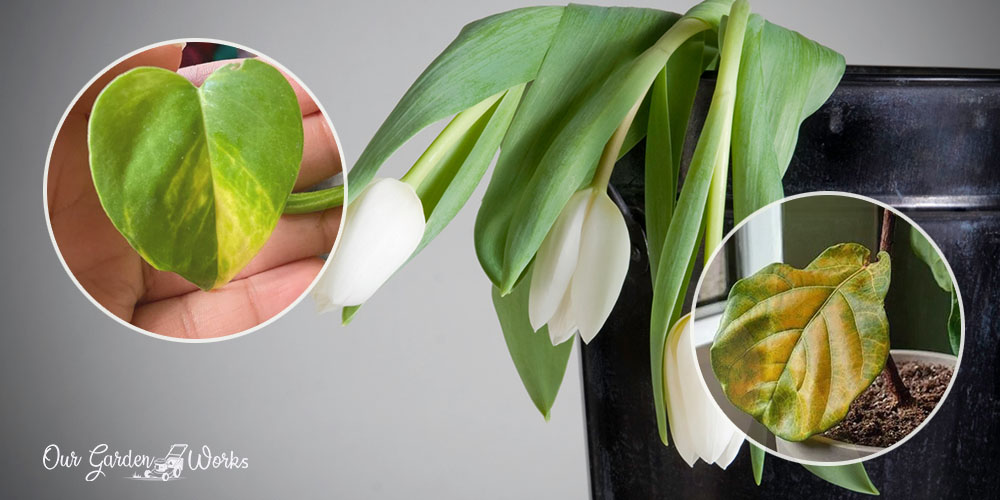If you know what culture shock feels like, that’s how plants deal with transplant shock. They are placed in a better pot so they can grow better but they must endure a little discomfort at the beginning. Their transplant shock recovery time puts them into internal mayhem that allows them to break and die or make them into more beautiful plants or trees.
The outcome of growth and development for plants is exciting and expected to be good but they have to undergo an ugly process. They’re pretty much like us humans but we have more complicated emotions.
Learn more about the transplant shock recovery time of plants so you can understand them better and never give up hope that they can get better.
What is transplant shock and how does it happen?
Transplant shock is a condition where the plant or tree experiences stress due to a change in its environment.
Plants in their natural habitat grow in one place from seed to maturity. Changes in the soil structure, volume, and composition create stress on the plant in its attempt to absorb nutrients and water from it.
Contrary to what other gardeners believe, transplant shock is a normal plant process to a certain degree. It may cause some leaves to get damaged and the stems to become sloppy but it is a necessary stage to forge the plant’s immunity to plant stresses, diseases, and pests.
Transplant shock is unavoidable no matter how perfect the soil and temperature are. However, with proper care and some love, your plants or trees can recover and become established in their new home faster.
Proper transplant maintenance is needed to ensure that no fungal disease or pest can affect your transplants since they’re very vulnerable to these stresses.
What does transplant shock look like?
Transplant shock manifests in plants and trees in different ways. Compared to other plant stress, transplant shock signs are more evident and concerning.
The signs are so hard to look at for every gardener since they don’t show any guarantee that the plant may get better.
Here are some images of what transplant shock looks like:
Droopy or wilting leaves: Small plants transplanted to a big pot often show this sign wherein the leaves look lifeless and the stem struggles to stay upright.
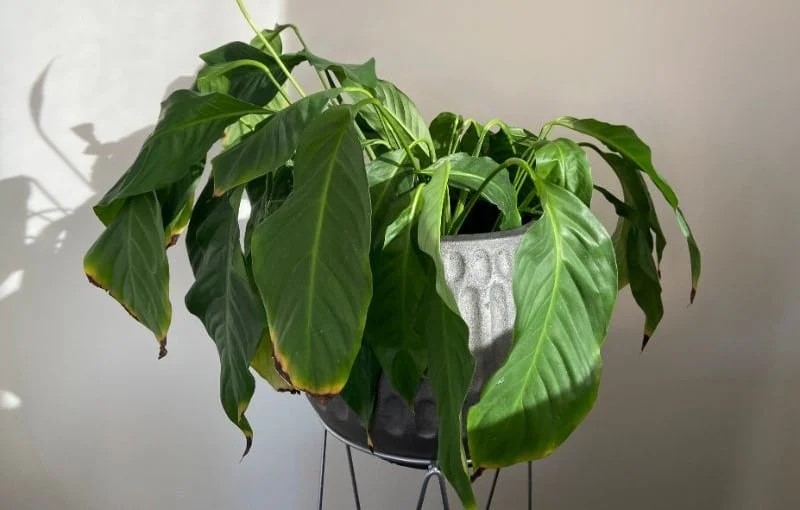
It is the first plant reaction to its new environment and most gardeners know that this is perfectly normal for a brief time.
Scorched leaves: Some plants experience scorched leaves which usually start with a bronze discoloration.
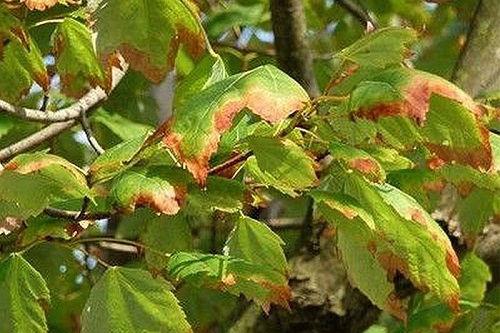
they experience symptoms of transplant shock.
The discoloration begins on the tissues between the leaf veins that eventually dry out and appear as scorched spots along the veins or on the edge of the leaves.
Leaf chlorosis or yellowing leaves: Transplanted plants and trees have roots that are not yet accustomed to the new soil pH level, structure, moisture, and temperature.
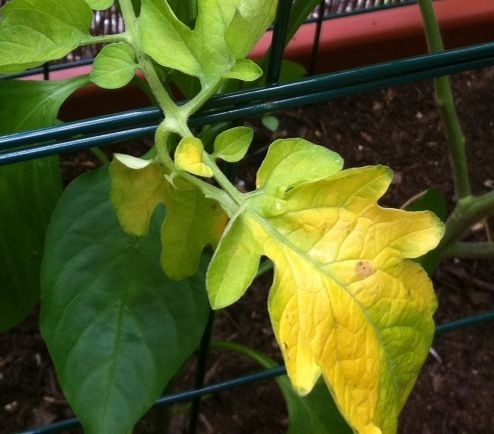
So, in the first few days, it will struggle to absorb nutrients and moisture from the soil leading to temporary nutrient deficiency.
Stunted growth: Due to the temporary disruption and the pursuit of the plant or tree to acclimate itself to its new pot or soil, its growth can be temporarily compromised.
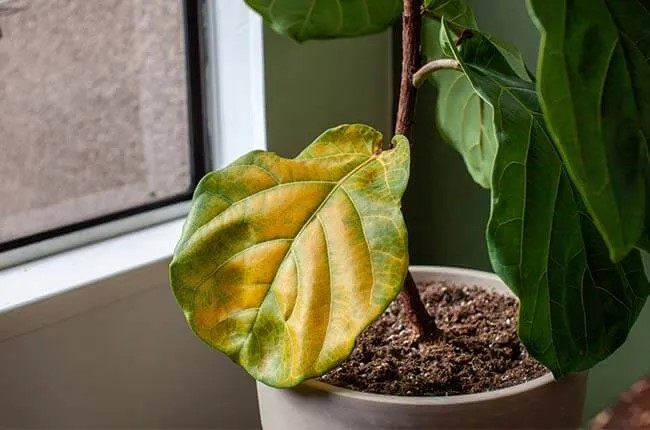
While the plant is in transplant shock it is allocating all its energy and resources to rebuild the roots and sustain the essential parts of the plant to keep itself alive.
Small new leaf and branch growth: Some plants or trees may experience poor leaf development since those leaves are developed when the plant is struggling to survive.
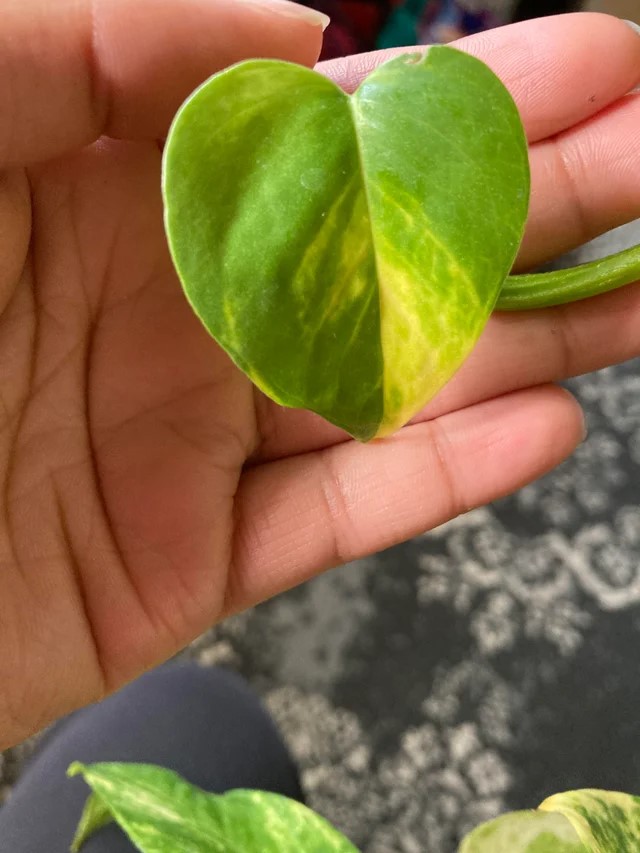
So, there is very limited energy and resources given to the new growth that led to their decreased leaf size.
Transplant shock recovery time of plants or trees
In a nutshell, the transplant shock recovery time of plants and trees can be as short as 1 week to 5 years. Their speedy recovery highly depends on the size or age of the plant, plant type, how it was removed from its former pot, and its current health.
Here are the approximate transplant shock recovery time frames for plants and trees that are in perfect health during the transplant procedure:
Small plants
Small plants and seedlings are usually the fastest to recover from transplant shock which takes around 1 to 3 weeks.
They’re still small and still have fewer plant parts to sustain and nourish during their survival state after transplant. In perfect soil and temperature conditions, they can even recover as fast as three to four days.
Shrubs and evergreens
Shrubs and evergreens are classified as woody ornamentals and take the same transplant shock recovery time as trees. Bare root shrubs, in particular, are more susceptible to transplant shock due to root injury.
According to the University of Kentucky, woody ornamentals can take around 3 to 5 years to recover from transplant shock.
Grass and sod
The recovery time of sod starts as soon as you unroll and expose it to the sun.
However, it takes around two weeks for the roots to navigate the new ground and become established. It is the reason why after sod installation, you have to water them diligently and avoid stepping on them for two weeks for a full recovery.
Young trees
According to North Dakota University, the rule of thumb for transplant shock recovery time for trees is based on their caliper diameter. Every inch on the caliper equates to 1 to 1.5 years of transplant shock recovery time.
Usually, young trees are around 2 to 3-caliper inches which means their ability to recover from transplant shock can take around 2 to 3.5 years. Trees sold in burlap bags sometimes take longer to recover due to the decrease in their root system and root injury when they’re lifted off the ground.
Big trees
Mature trees with bigger trunk diameters take the longest time to recover from transplant shock. In perfect conditions, they can heal as fast as one year.
However, if they’re exposed to fluctuating temperatures and a new soil environment, they take around 5 years to fully recover and be established.
Factors that affect transplant shock recovery time
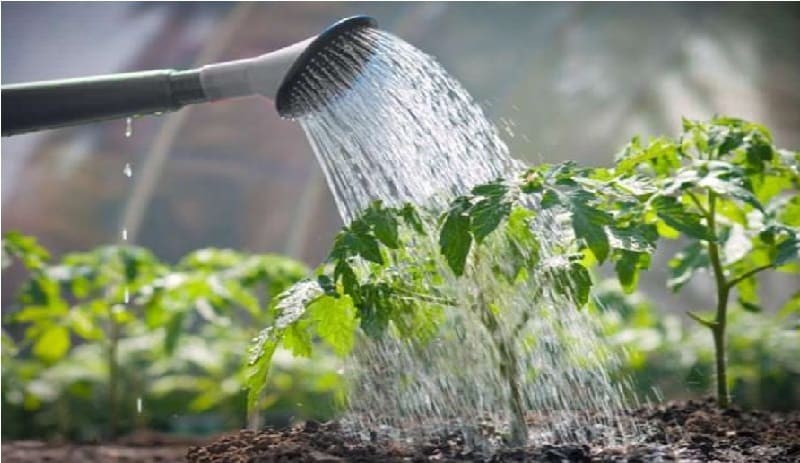
If you ask professional gardeners about how long your plant can recover, they may not give you a specific timeframe right away.
Just like in humans, plant and tree transplant recovery time is unpredictable due to the following factors.
Type of plant
Herbaceous, seedlings, and small plants usually take the fastest route to recover because of the small plant system they have to sustain. They also don’t suffer from root injury and decrease in root mass due to their small root systems.
Trees and woody ornamentals are the longest to recover because of their complex plant system and the higher chance to sever their extensive root system underground. They become so used to their old pot that it gives them a hard time adapting to the new soil environment in their new pot or location.
Size of the plant
The bigger the plant, the longer it takes for them to recover. Small trees with smaller trunk diameters take a lot faster to recover since they have a smaller plant system to support during transplant adjustment.
However, established trees that are too old to be moved are at a higher risk for plant health decline and death. They have extensive roots in the ground that are often cut off and left in the ground which causes severe injury.
Soil environment
One of the major causes of transplant shock symptoms like yellow and scorched leaves is the struggle of the roots to adjust to the new soil structure, pH level, moisture, and microbiome.
The transplant shock is especially evident on plants or trees transplanted into clay soil. They usually show signs of stress several months after the transplant.
The sad part about this process is fungal diseases will take advantage of the survival mode of the plant. They will make it weaker until it gives up and dies.
Temperature
Transplant shock recovery also takes longer for plants and trees that are cold or heat-sensitive. Tropical plants transplanted into a cold and shaded location with low humidity will have a hard time recovering.
During transplant recovery, plants and trees need the most ideal environment and climate to survive.
Imagine having to deal with a new environment, fight off fungal diseases and pests, and keep the plant parts alive and healthy. They’re taking on a lot of adjustments so they need the most care and attention during their recovery period.
Plant health before transplant
The plant’s health is the biggest determining factor in its chances of survival. Repotted plants that are in critical condition due to root rot, soil pests, and fungal disease may take months to recover.
Injured and sick plants also have a slim chance of survival and are usually placed in a unique recovery pot or (what we call) “plant ICU” until they are strong enough to grow on their own.
What to do if your plant or tree shows signs of transplant shock?
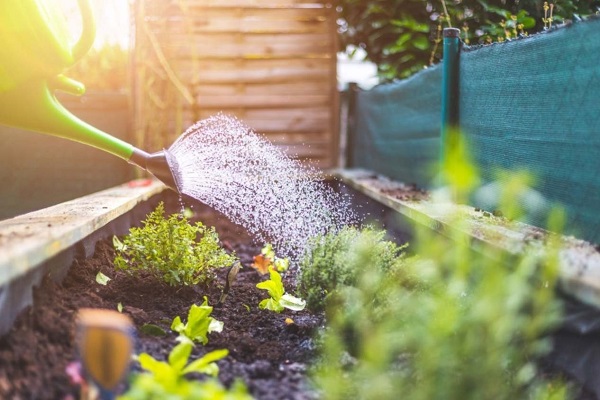
You cannot cure transplant shock with any organic or synthetic solution. It is one of the hardest pills to swallow that any gardener has to endure, especially if the plant is failing to adapt to its new pot or location.
Also, you should realize that if a transplant manages to survive it will not be able to restore its 100% potential like it used to.
The only thing you can do for your transplants is to protect them from further stress and give them everything they need to survive.
Here are the do’s and don’ts in taking care of a plant in transplant shock recovery:
(1) Fertilizing transplants at full strength will further stress the irritated roots of your plant.
Give them a few weeks or months to recover before you restart their feeding. In most cases, you should wait for them to develop new leaves before you can resume the fertilization process.
(2) Prune the dead parts of the transplant so that it will not allocate its already depleting energy to get rid of its dead parts. On the outside, you may think that you’re hurting the plant, but it actually helps them lessen their tasks to survive.
(3) When buying plants from plant shops and nurseries, make sure that the plants are in good health with green leaves and vigorous growth.
Orchid sellers, in particular, place orchids in no-drainage pots that suffocate the roots. So, they may have blooms and healthy leaves during the first weeks but they will get waterlogged when transplanted to their new pot.
(4) Make sure that the soil is well-draining before you water the transplanted plants generously.
If the soil is too compact or pools too much water, it can further stress the roots which invites fungal disease and root rot into the plant system.
(5) Mulching helps transplanted plants get adequate moisture and maintain soil temperature ideal for the roots.
(6) Consider the plant’s climate and soil requirements and growth habits when choosing the right medium and location for the transplant.
Putting them in an environment where they thrive or are in their element allows them to heal their injuries and recover faster.
(7) Choose the best time to transplant your plants to avoid making their condition worse.
The best time for transplantation is during the first week of spring and the last weeks of fall. Plants are usually close to dormancy during these times which allows them to conserve starch and energy and allows them to be equipped for the transplant process.
Final Thoughts
Transplant shock recovery time of plants has the same facets as how we recover from illnesses as humans. After all, plants and trees are living things and have their unique way of recuperating from stress too.
In a nutshell, here’s an estimated transplant recovery time for plants and trees:
- Small plants and seedlings: 1 to 3 weeks.
- Shrubs and woody ornamentals: 3 to 5 years.
- Grass and sod: 2 weeks
- Young trees: 2 to 3 years
- Mature and big trees: 5 years
It can be easy to give up on transplants especially if they are not showing any positive signs for several months.
Though their recovery is unpredictable, we hope that this post gave you a glimpse of how long you can hold on to the hope that your plant can achieve 100% recovery.
Let us know in the comments about your experience with your recovering transplants and what methods helped them get better faster.
Also, how many plants have you lost due to transplant shock? What are the mistakes that you did that made them worse?
May this post spread awareness about the effects of transplant shock on plants and more gardeners master how to diagnose the symptoms of transplant shock stress. Share this with your friends and prevent them from making mistakes that can threaten the life of their plants.
If you have recovering transplants, we hope that they will be able to make it and they’ll be able to thrive in their new pot or location. Happy gardening!
